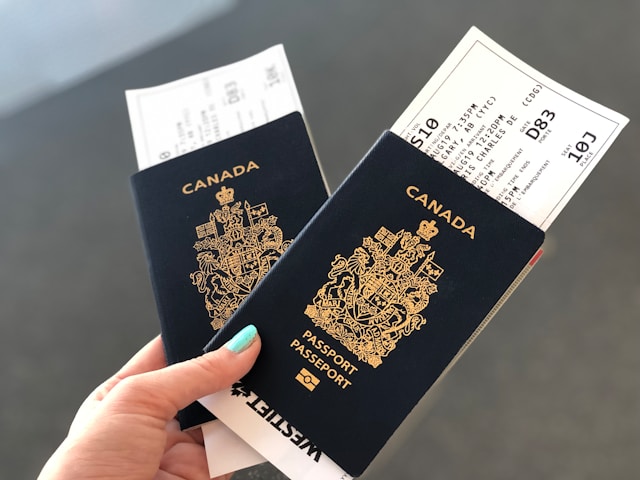Canada is a land of opportunity, offering a strong economy, high quality of life, and diverse job market that attracts workers from all over the world. Whether you’re a skilled professional, a fresh graduate, or someone seeking new experiences, Canada has multiple work permit options to help you build your career.
But here’s the big question: Do you need a job offer to work in Canada? Not necessarily! Canada provides two main pathways for foreign workers: employer-specific work permits (which require a job offer) and open work permits (which don’t). Understanding the differences between these permits is key to choosing the right path for your future.
This guide will break down everything you need to know about Canada’s work permit system, whether you have a job offer or not. Let’s get started!
Understanding Canada’s Work Permits
Canada issues two primary types of work permits: employer-specific work permits and open work permits.
Employer-Specific Work Permits
This type of permit is tied to a specific employer, meaning you can only work for the company that sponsored you. If you want to change jobs, you’ll need a new work permit.
Some job offers are LMIA-exempt (e.g., intra-company transfers, trade agreements like CUSMA, or Provincial Nominee Programs). Requires a valid job offer from a Canadian employer.
Often needs a Labour Market Impact Assessment (LMIA), proving that no qualified Canadians are available for the job.
Open Work Permits
Open work permits allow you to work for any employer in Canada, with a few exceptions. These are highly flexible and ideal for those who qualify.
- No job offer required!
- Common types: Post-Graduation Work Permit (PGWP), spousal open work permit, International Experience Canada (IEC), and permits for humanitarian applicants.
- Cannot work for employers involved in adult entertainment services.
Both pathways have their advantages, and the right one depends on your eligibility and career goals.
Getting a Work Permit With a Job Offer
If you have a job offer from a Canadian employer, you’ll likely need an employer-specific work permit. Let’s explore how this works.
Employer-Specific Permits & LMIA Requirements
Most employer-specific work permits require a Labour Market Impact Assessment (LMIA). This is a document from Employment and Social Development Canada (ESDC) that proves no qualified Canadians are available for the job, so the employer can hire a foreign worker.
Steps to Obtain an LMIA-Based Work Permit:
- The employer applies for an LMIA. Processing can take several weeks or months.
- If approved, the employer provides the LMIA document and job offer letter.
- You submit your work permit application, including required documents like proof of experience, education, and financial stability.
- Wait for processing and approval. Once approved, you can start working in Canada.
LMIA Exemptions (When You Don’t Need an LMIA)
Certain jobs and work permits do not require an LMIA. Some common exemptions include:
- CUSMA (formerly NAFTA) Professionals: If you’re a US or Mexican citizen in a qualified profession, you may be eligible for an LMIA-exempt work permit.
- Intra-Company Transfers: If you work for a multinational company and are transferred to a Canadian office, you don’t need an LMIA.
- Provincial Nominee Program (PNP) Candidates: Some PNP streams allow workers to get a work permit without an LMIA.
Advantages of Job-Specific Permits
- Pathway to Permanent Residency: Employer-sponsored work experience can increase your eligibility for permanent residency.
- Express Entry Points Boost: A valid job offer can add 50–200 CRS points in the Express Entry system.
- Job Stability: Guaranteed employment in Canada.
Working in Canada Without a Job Offer
If you don’t have a job offer, don’t worry! Several open work permit options allow you to work in Canada without employer sponsorship.
Open Work Permit Categories
- Post-Graduation Work Permit (PGWP): Available to international graduates from Canadian institutions, valid for up to three years.
- Spousal Open Work Permit: If your spouse is a skilled worker or international student in Canada, you can apply for an open work permit.
- Humanitarian-Based Work Permits: Available for refugee claimants, vulnerable workers, and protected persons.
International Experience Canada (IEC) – The Working Holiday Visa
The IEC program allows young adults (18–35) from partner countries to work in Canada with an open work permit.
Types of IEC Work Permits:
- Working Holiday: Open work permit, allowing job flexibility.
- Young Professionals: Employer-specific permit for career growth.
- International Co-op: For students seeking internships.
🔹 2024 Update: Canada has allocated 90,000 IEC spots, with processing times as short as 5 weeks!
Application Process & Timelines
The application process varies depending on the type of work permit.
Employer-Specific Permit Process
- Employer secures an LMIA or exemption.
- Submit work permit application with job offer, LMIA (if applicable), and personal documents.
- Biometrics and medical exam (if required).
- Processing time: Usually 8–12 weeks, but can vary.
Applying for an Open Work Permit
- Determine eligibility (PGWP, IEC, spousal permit, etc.).
- Submit application online with supporting documents.
- Processing times: Varies by program (IEC: 5 weeks, PGWP: 3–6 months).
Transitioning to Permanent Residency
Many work permit holders aim to become permanent residents. Here’s how:
Express Entry & Job Offers
- LMIA-backed job offers add 50–200 points to your Comprehensive Ranking System (CRS) score.
- Work experience in Canada (via an employer-specific or open work permit) can help you qualify for the Canadian Experience Class (CEC) stream.
Provincial Nominee Programs (PNPs)
- Most provinces prioritize workers already in Canada.
- If you’ve worked in a province under an employer-specific or open permit, you may get nominated for PR faster.
Conclusion
Canada’s work permit system offers multiple opportunities to foreign workers. Whether you secure a job offer or apply for an open work permit, both pathways lead to exciting career possibilities and potential permanent residency.
💡 Key Takeaways:
✅ Job offer? Employer-specific permits provide job security and PR advantages.
✅ No job offer? Open work permits like PGWP, IEC, and spousal permits offer flexibility.
✅ Plan ahead! Understand processing times and eligibility criteria to avoid delays.
With the right strategy, you can make your dream of working in Canada a reality. Are you ready to take the leap?


